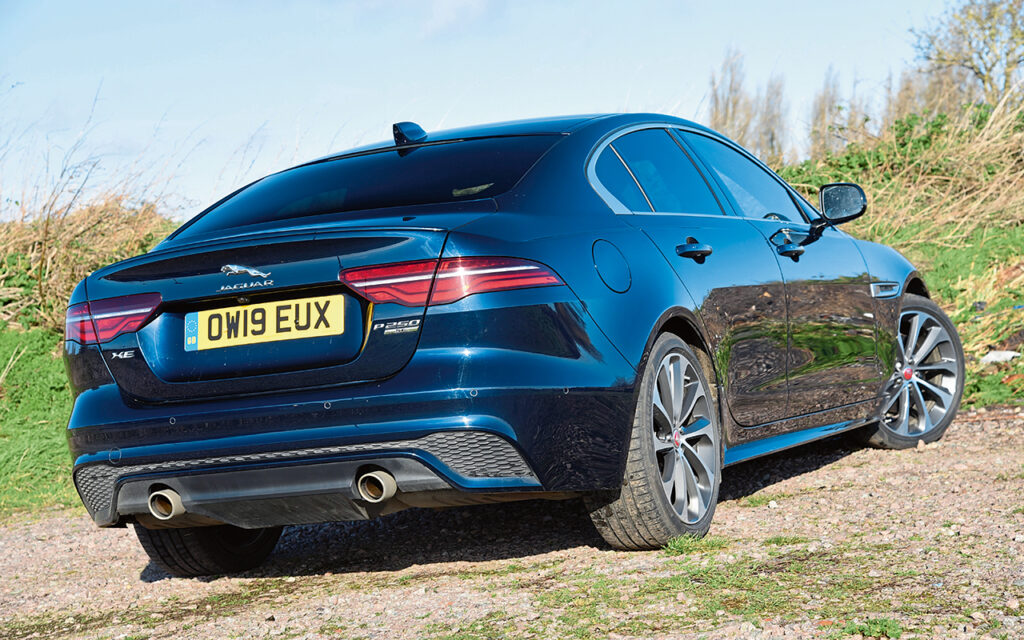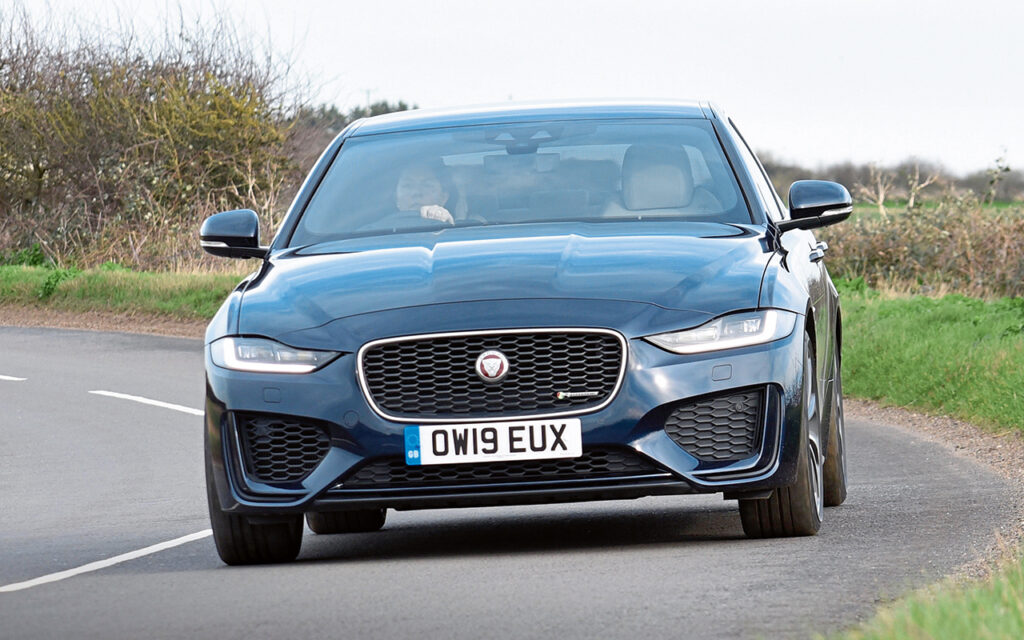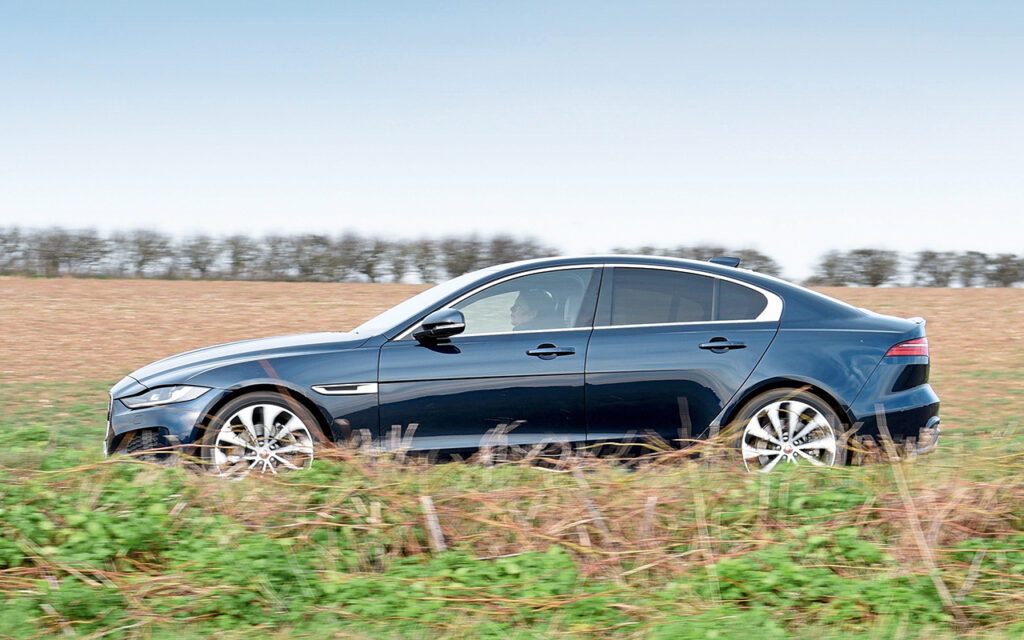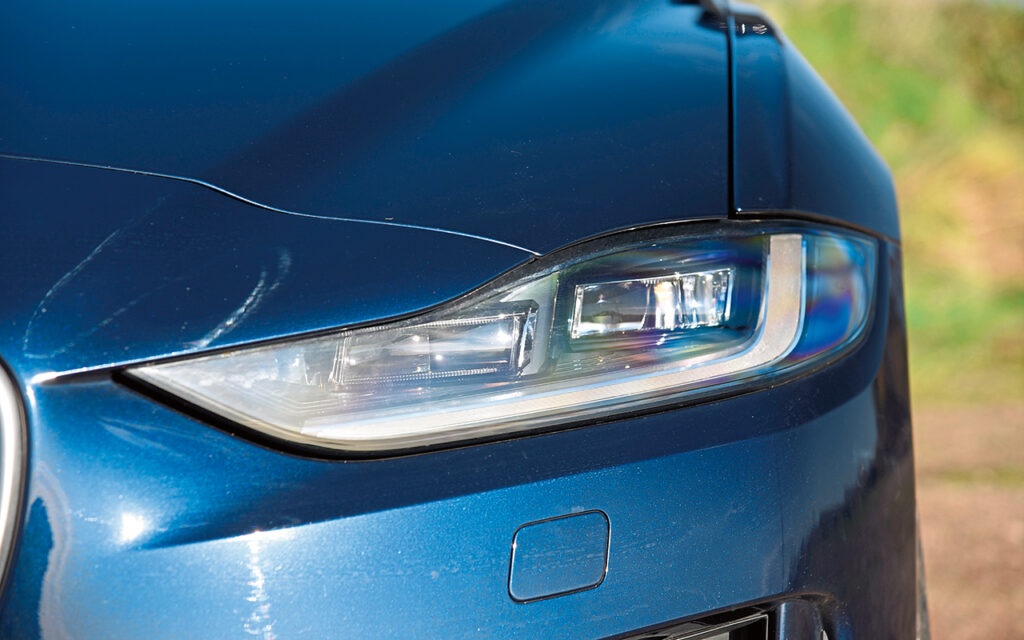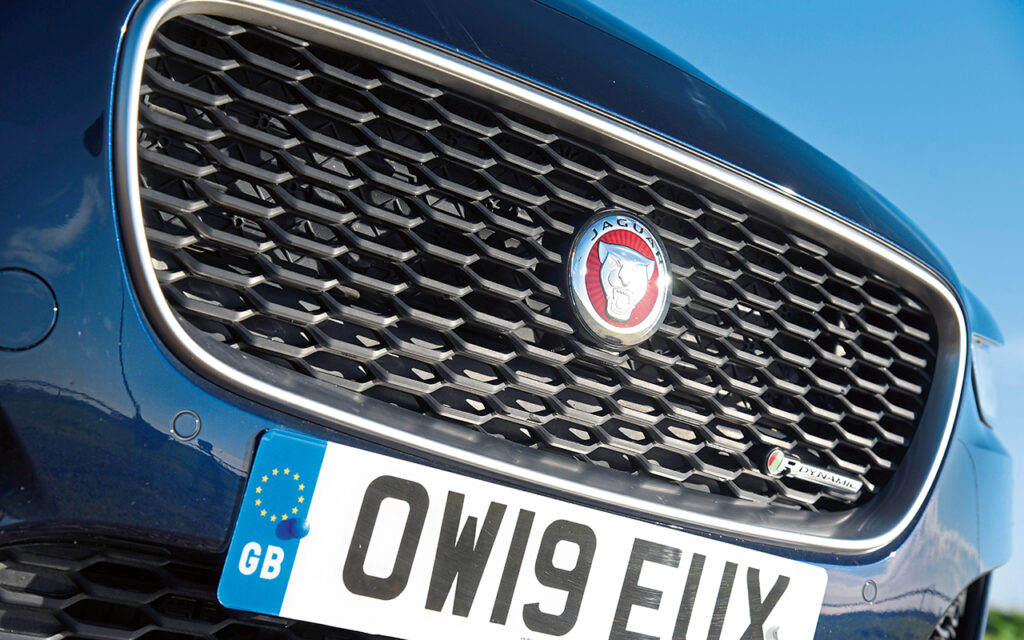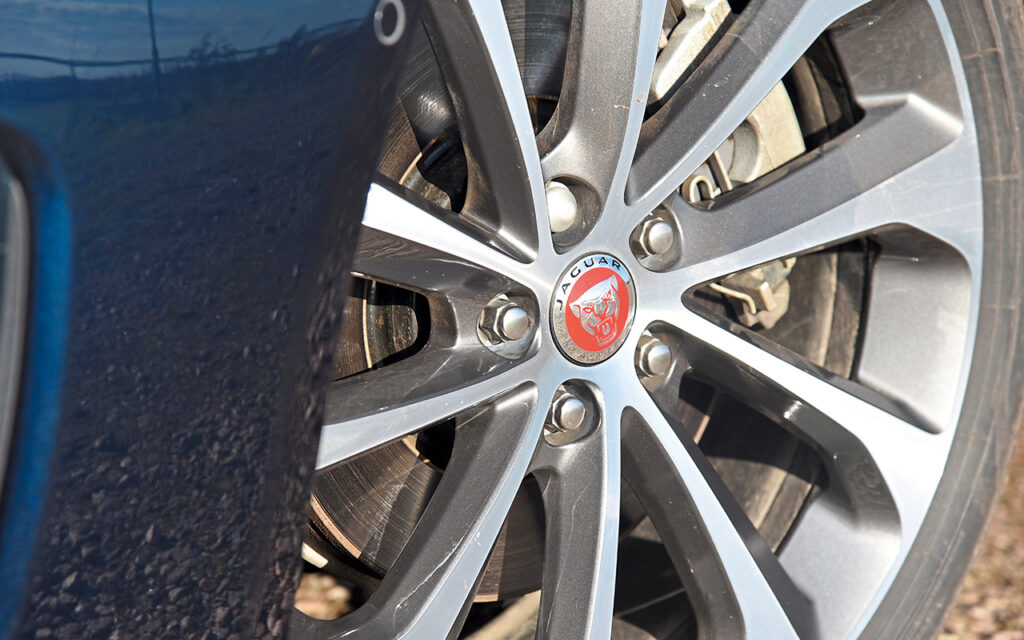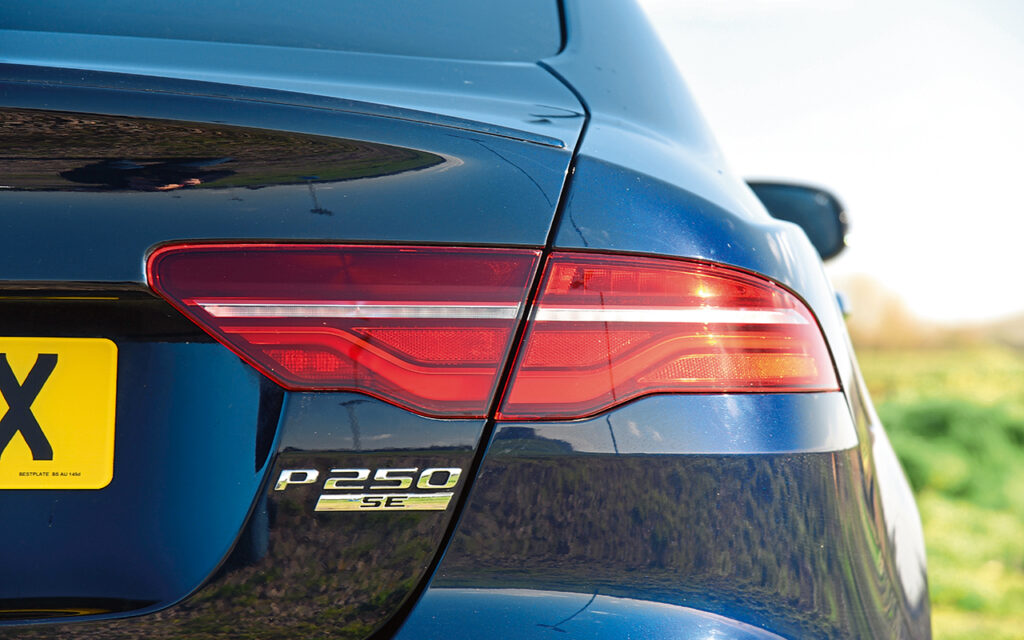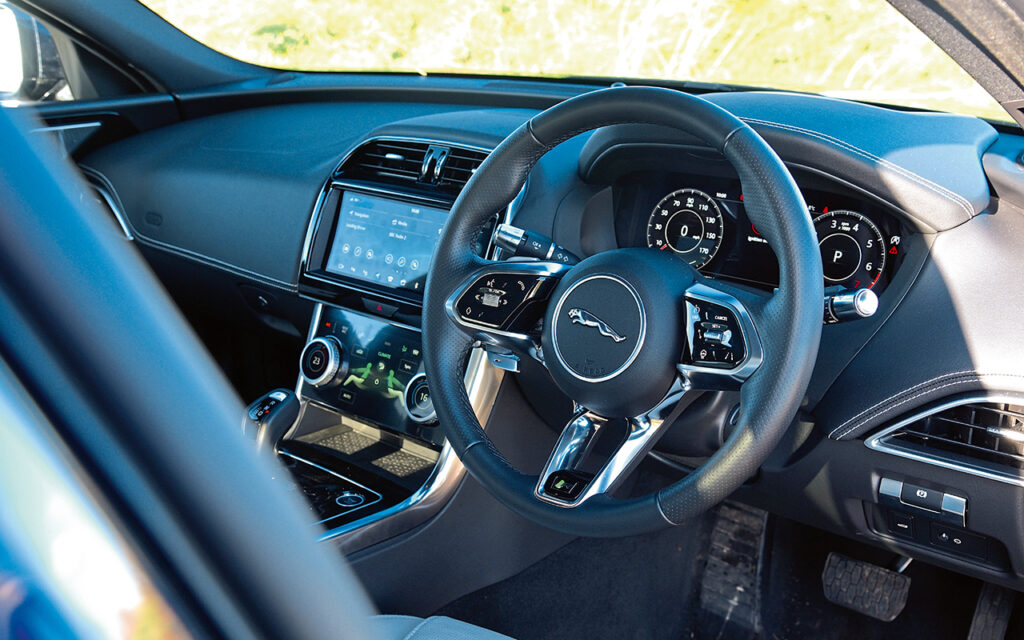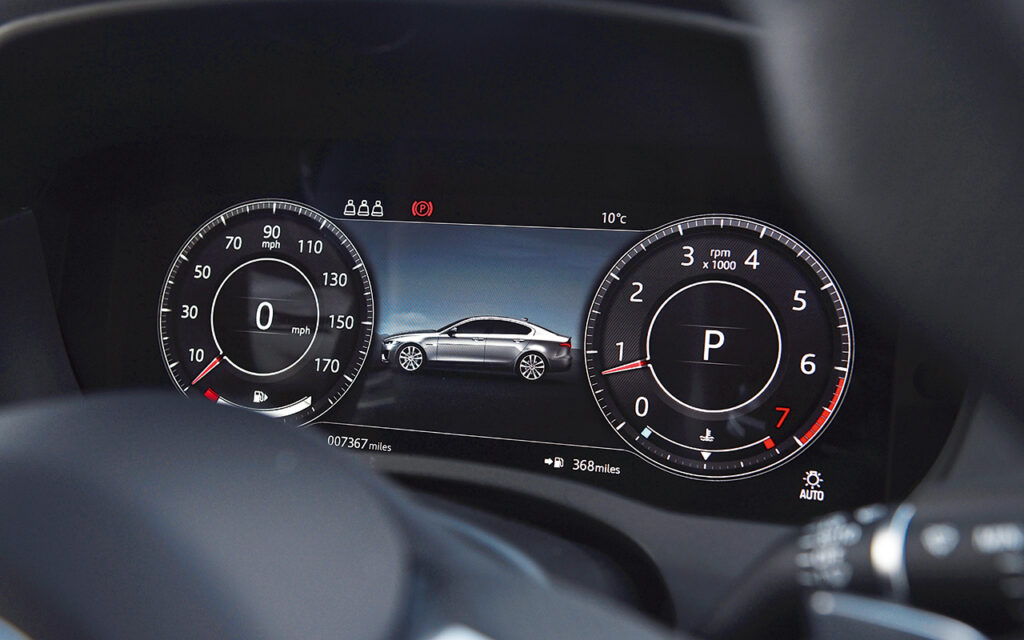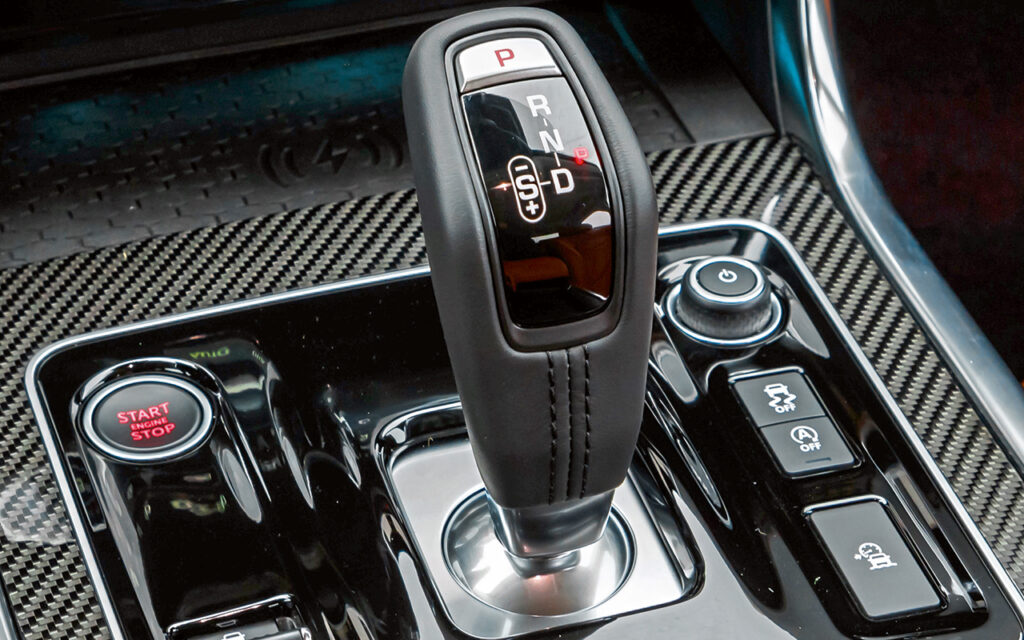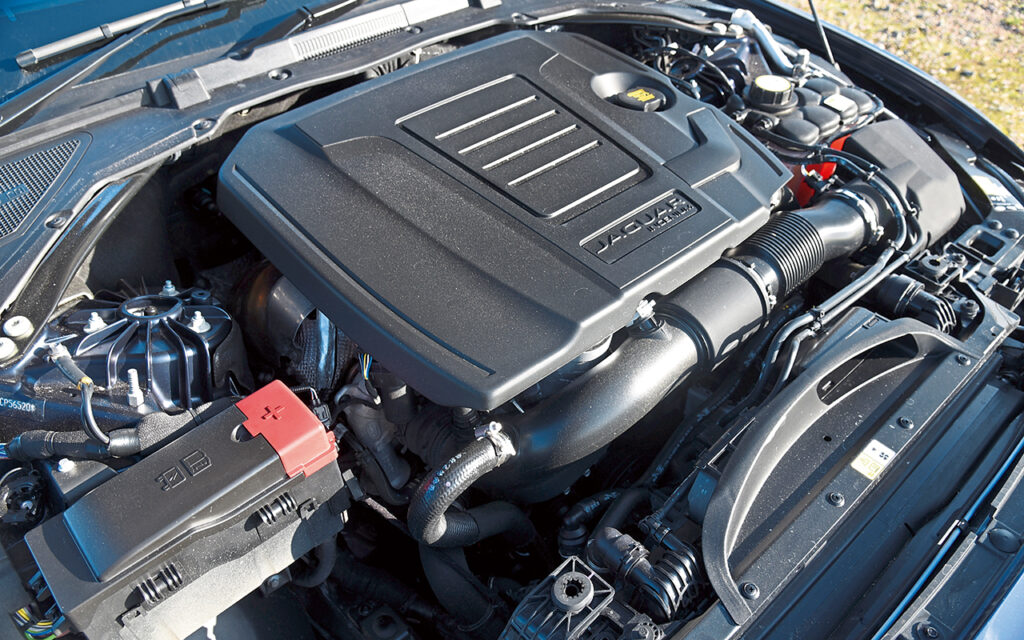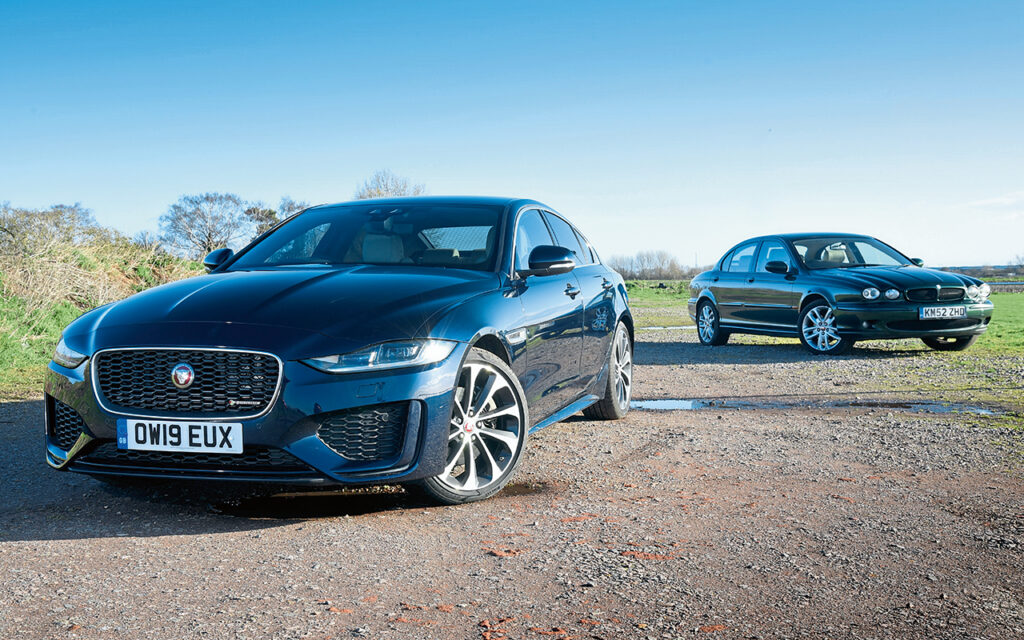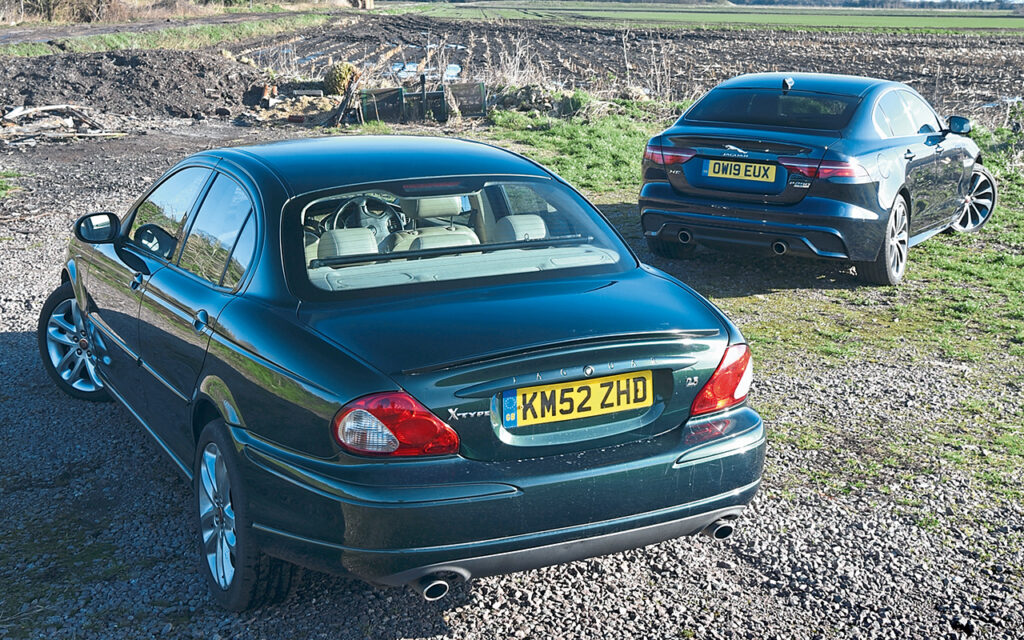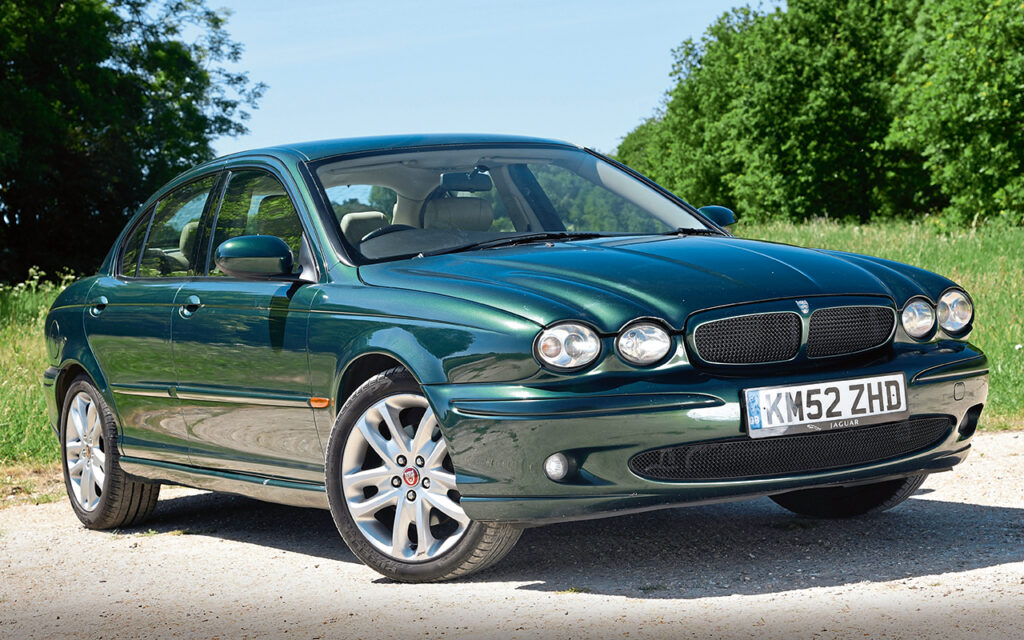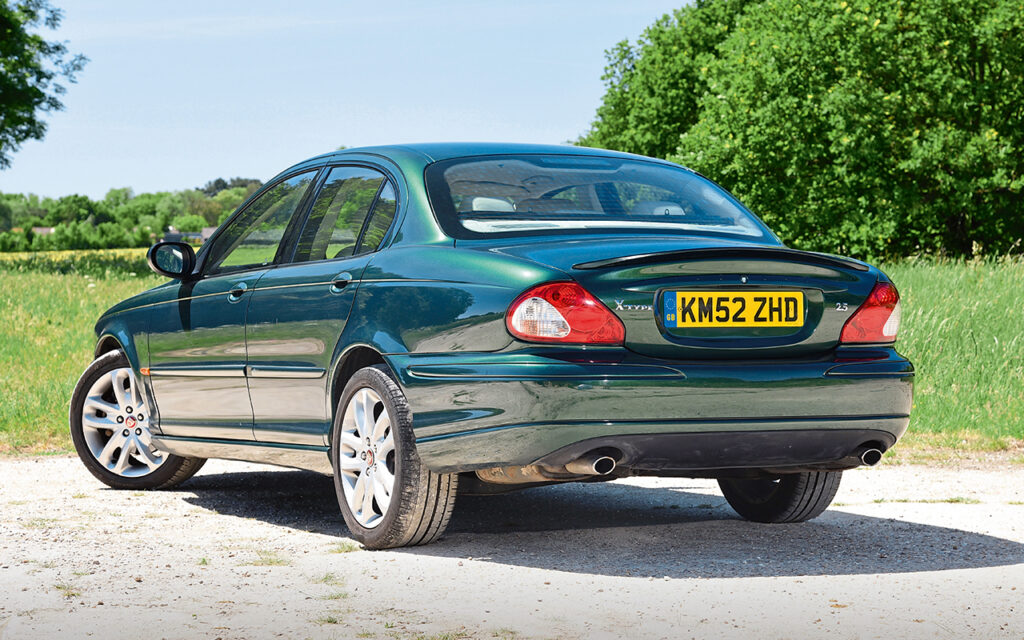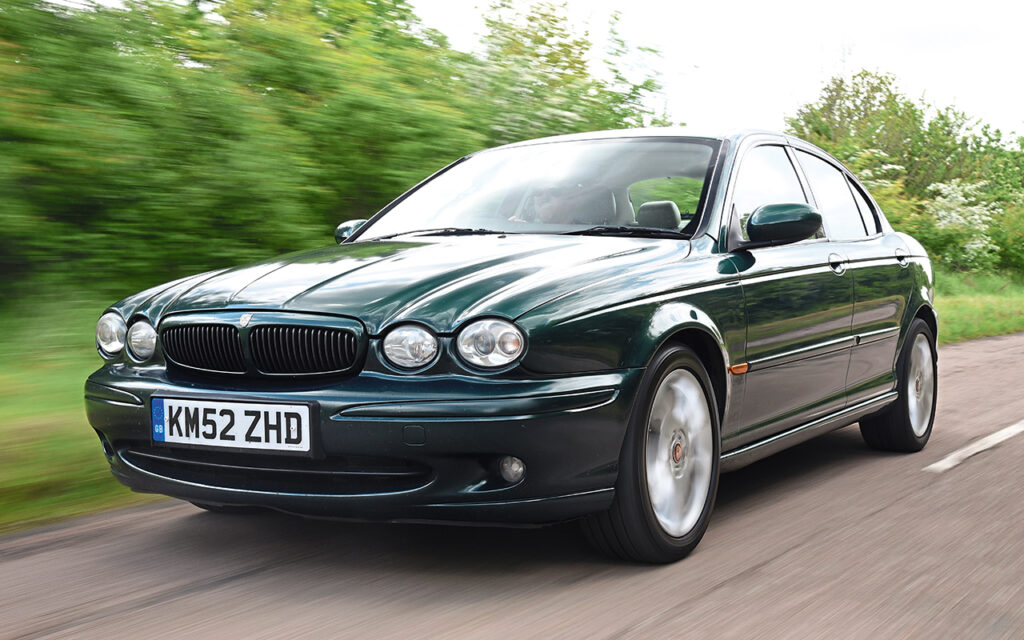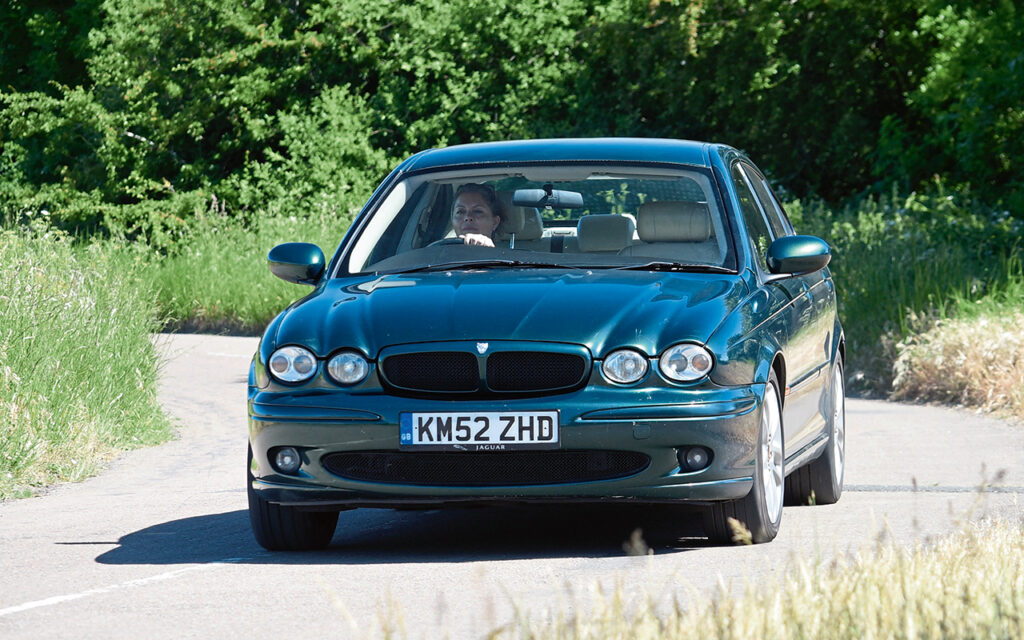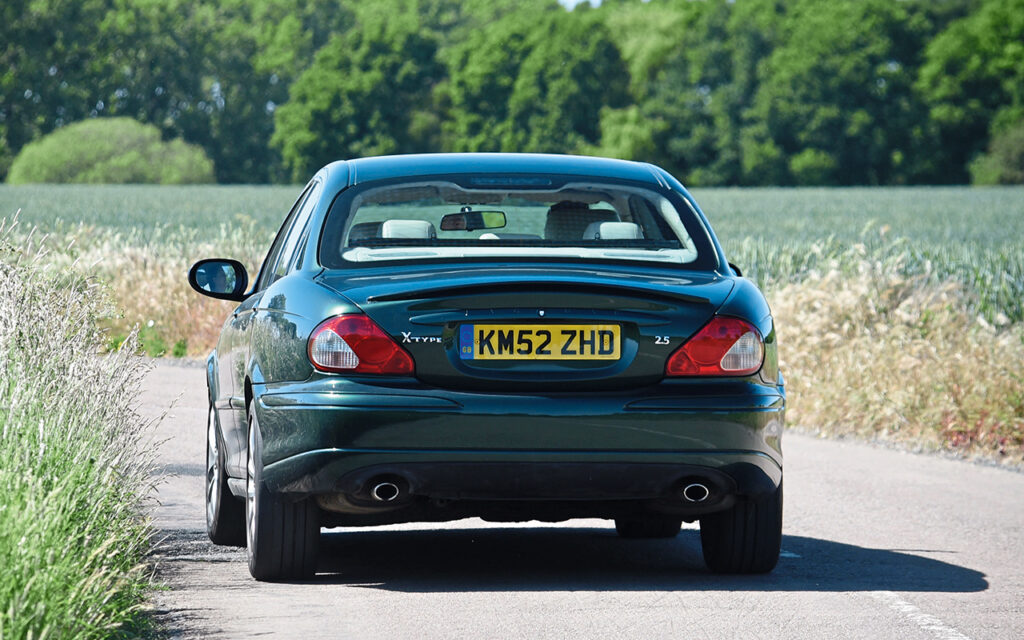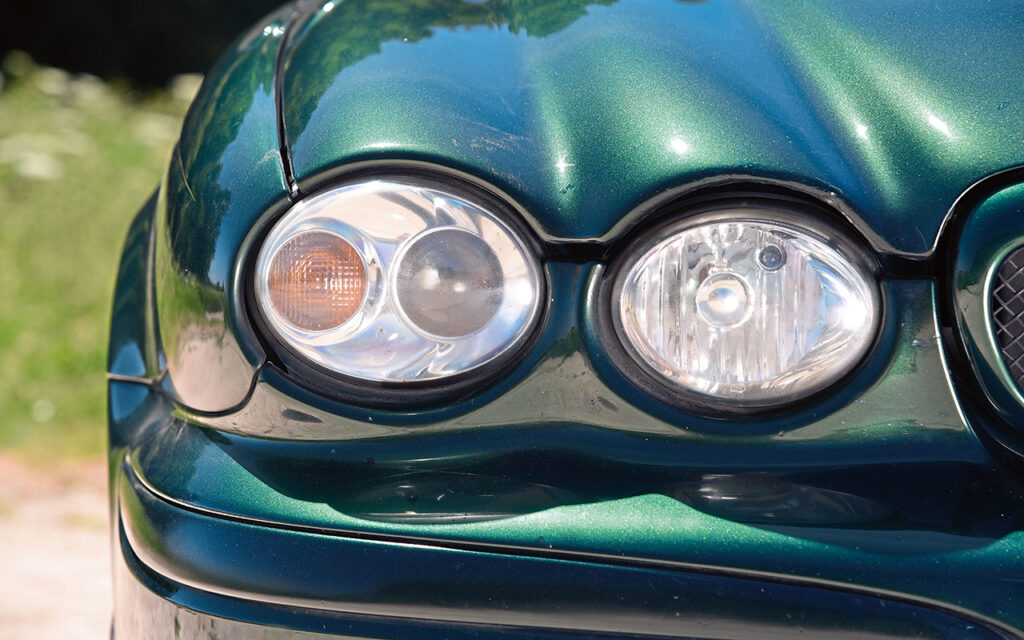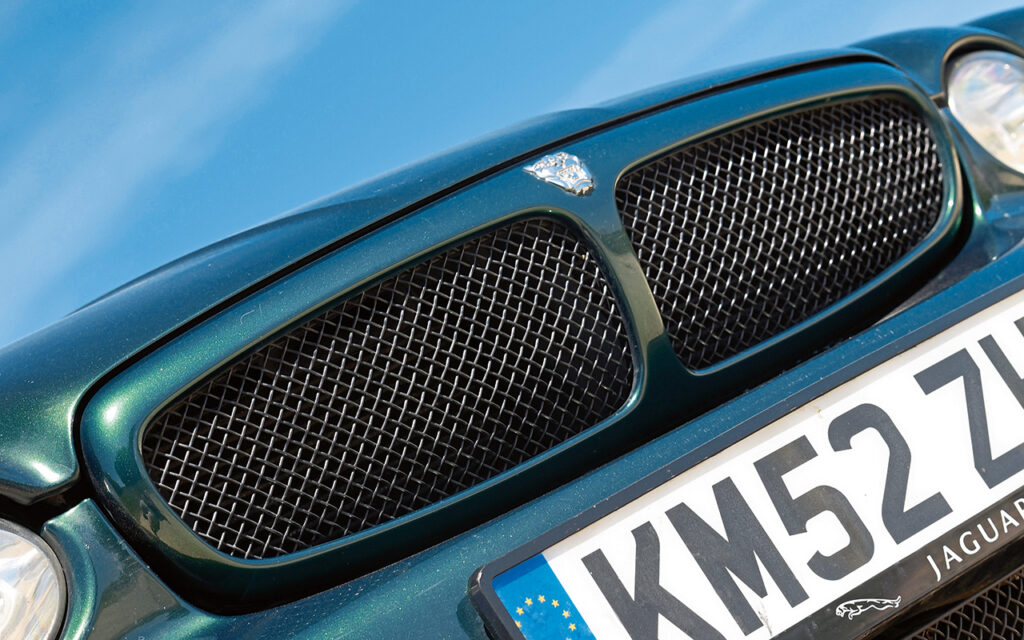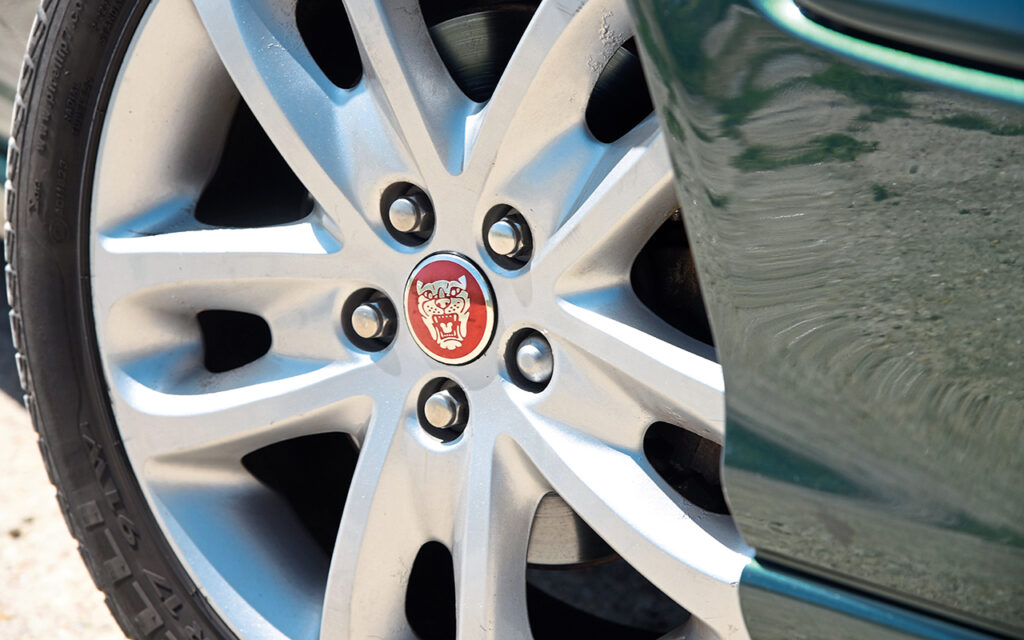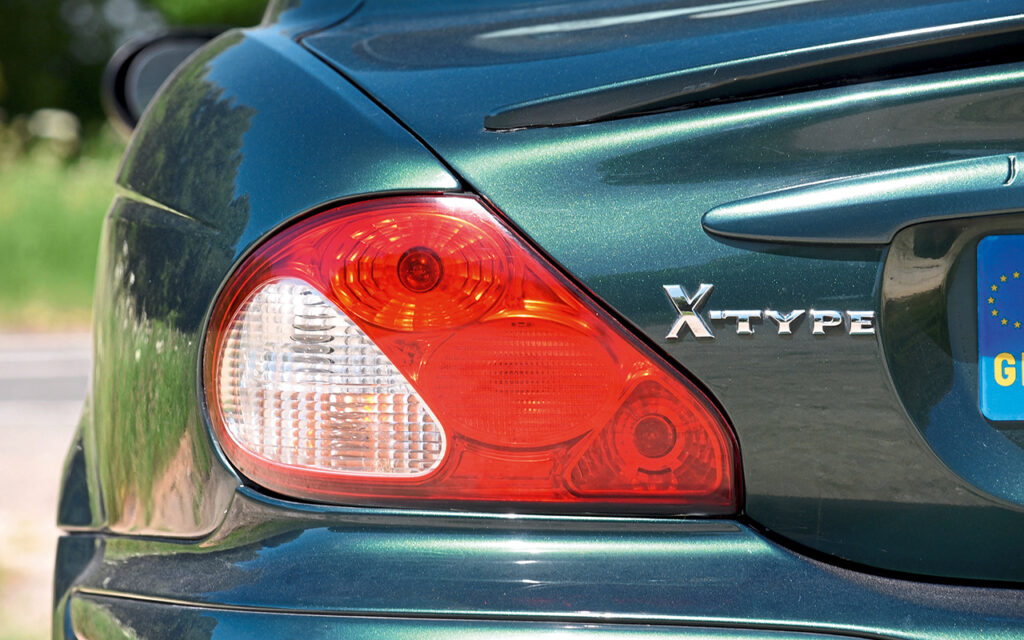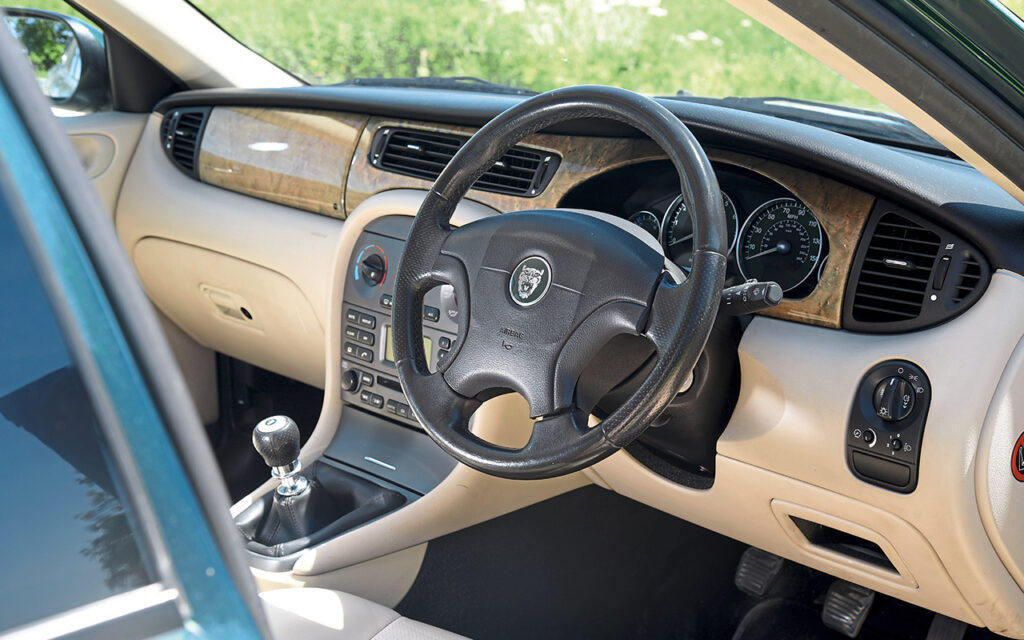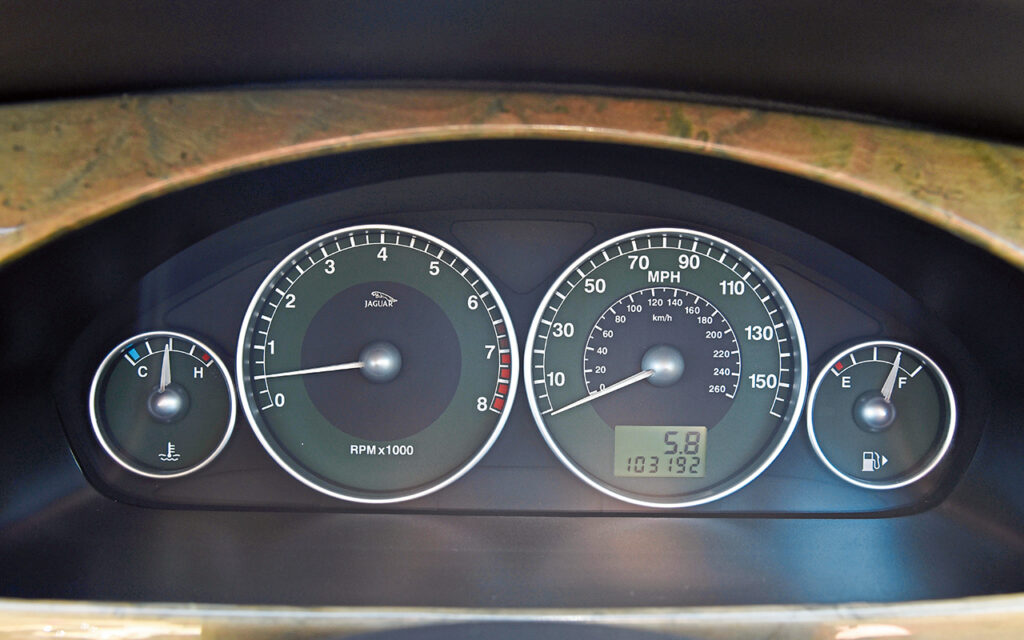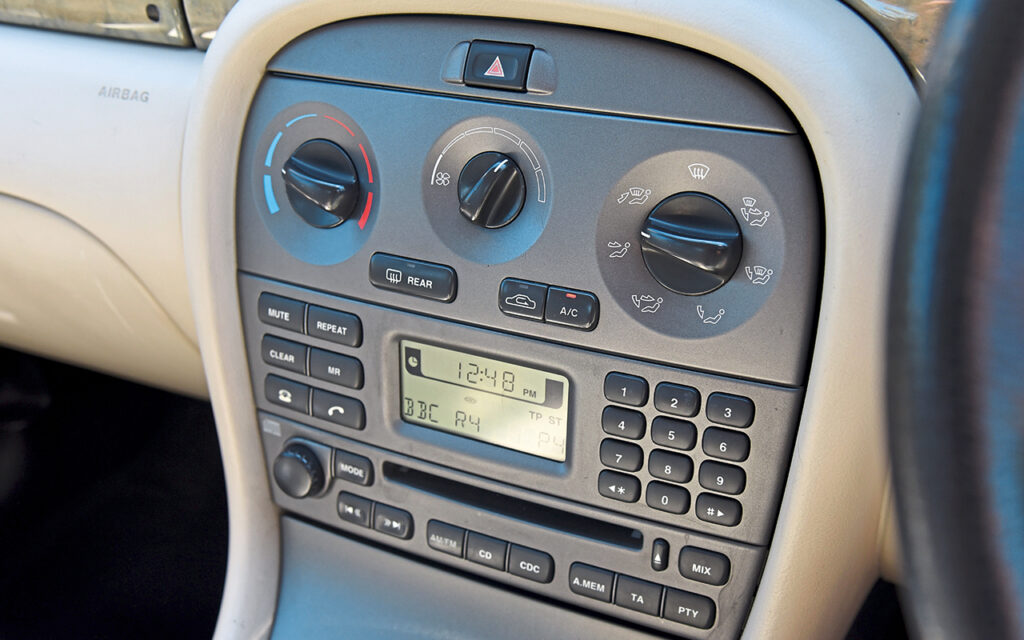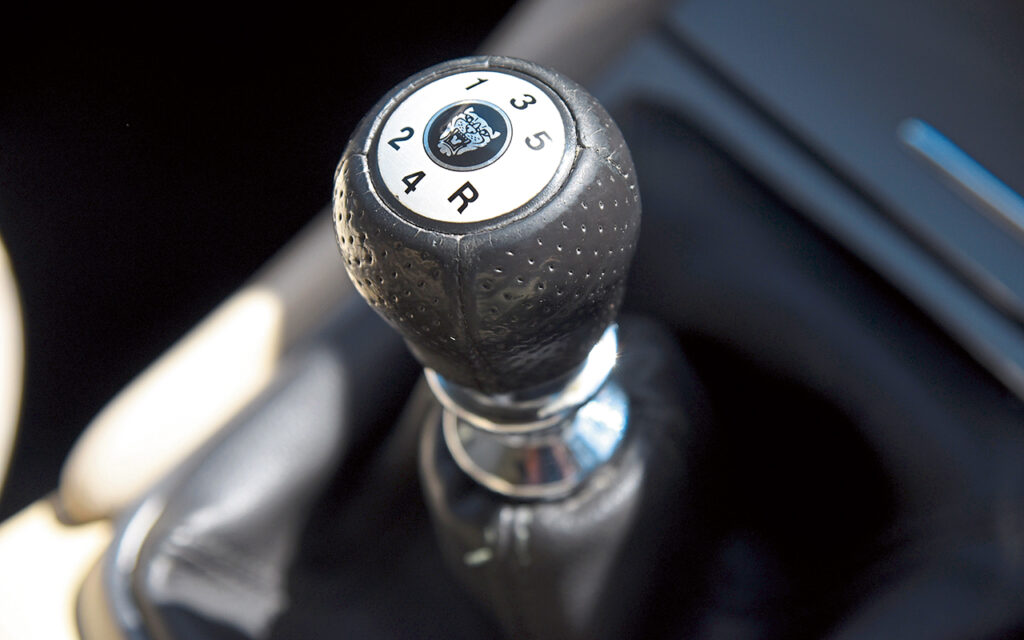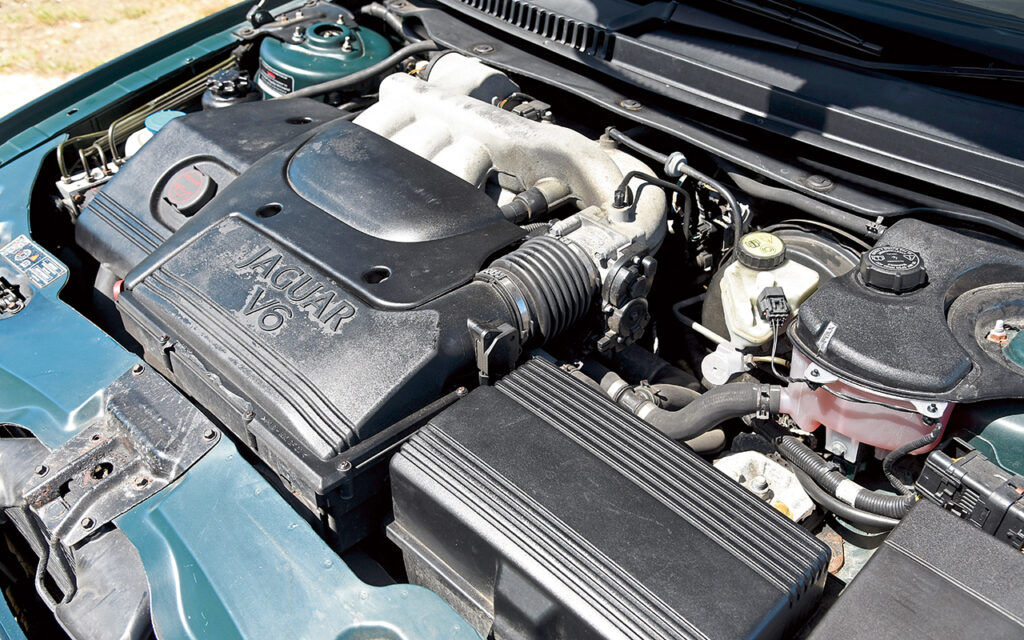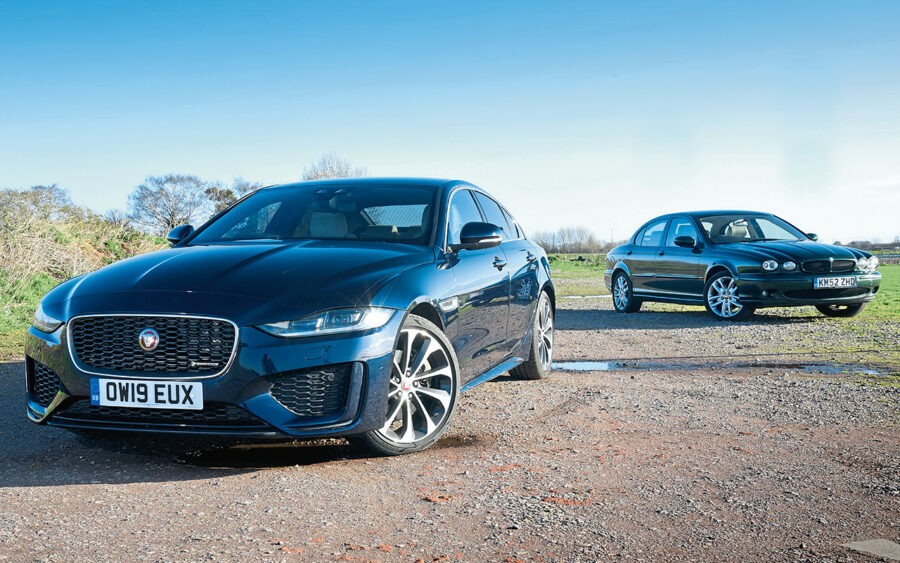How has Jaguar’s compact saloon progressed over the past two decades? We compare an early X-Type 2.5 with an XE P250 to find out
Words: Paul Walton
In his 1940 book Inside the Whale and Other Essays, author George Orwell wrote, “Progress is not an illusion. It happens, but it is slow and invariably disappointing.”
This is sometimes the case in automotive development. Just because a car is new, it doesn’t follow that it will necessarily be better than its predecessor. Take the 1982 Ford Sierra; it might have been technically better than the out-going Cortina Mk 5, but its ‘jelly mould’ shape was initially not as popular as the Cortina’s. Or the E60 BMW 5 Series – its awkward ‘flame surfacing’ design has still never been as accepted as the clean lines of the car it replaced, the all-conquering E39.
So how does the recently facelifted XE compare with its predecessor, the X-Type? Almost two decades separate the two, yet, as compact saloons, they have much in common. With 20 years of development, the newer car should be better than the old one. But is it?
The X-Type didn’t appear to be an indication that Jaguar was making progress when the car made its debut at the 2001 Geneva Motor show. Although Jaguar’s designers looked at more modern styling themes – including slim headlights not unlike those that eventually made their way onto the X250 XF and X351 XJ – they were thought too forward. Because the company was going to sell the car based on heritage, it was considered that strong and unquestionably traditional Jaguar cues were essential. Buy an X-Type, its design was saying, and you are buying into the entire Jaguar deal: the D-type, the E-type, the XJ6, Sir William Lyons, Lofty England, Lofty England’s cravat, Malcolm Sayer’s pencil, the whole shebang.
Which is why the car’s traditional three-box design, a heavily fluted bonnet and quad lights either side of a wide, rectangular grille were clearly influenced by the daddy of all Jaguar saloons, the XJ6 Series 1 of 1968. It was a cynical way to sell the car, but it worked, the press being generally positive about the design.
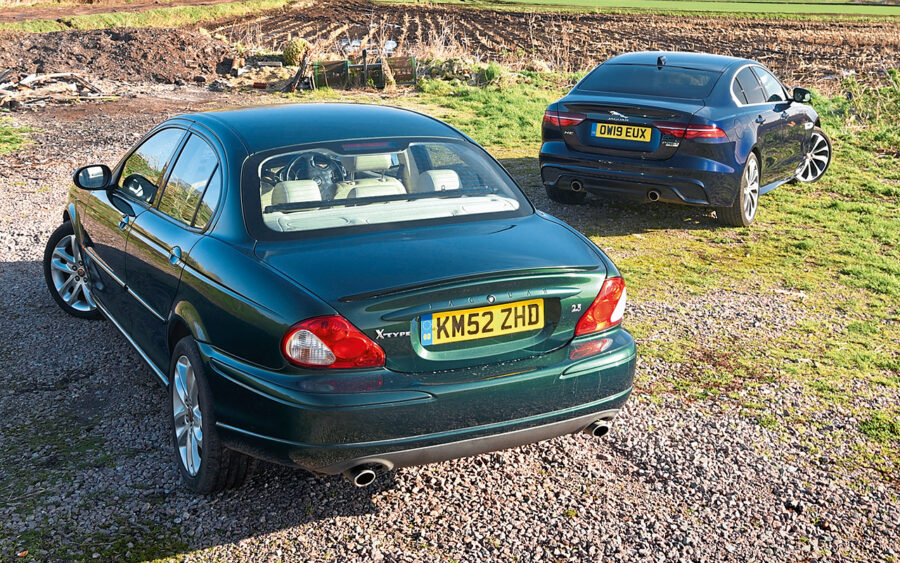
“It’s not just different,” announced the BBC’s Top Gear in its June 2002 issue, “it’s elegant in its own right.”
Alongside the Metallic Racing Green X-Type 2.5 Sport, this Portofino Blue XE SE R-Dynamic P250’s slim headlights, tall waistline and large 19in gloss-black five-spoke alloys (a £900 option) clearly establish it as the more modern of the two, yet it lacks the older car’s character. It is a cliche to say Jaguar’s current cars could be produced by any manufacturer, but it’s true. Prize the Growler badge off the nose and non-enthusiasts would struggle to recognize the XE’s maker, which isn’t something that can be said about the familiar lines of the X-Type.
Plus, whereas in 20 years’ time the XE will start to look dated, the X-Type’s traditionalism has the timeless quality of an XJ6 Series 1, a perfectly cut Saville Row suit, or good manners.
Yet, if we could peel away the X-Type’s layers of fake heritage we’d see a very modern car for its day. The X-Type’s development had the greatest use of computer-aided engineering (CAE) of any previous Jaguar product, resulting in a body that was the stiffest in class by 30 percent – important for delivering excellent ride and handling, and helped to prevent the onset of squeaks and rattles. Plus, it was the first Jaguar to make extensive use of the digital CANbus computer network systems (doing away with much wiring) and OBDII, the second generation of on-board self-diagnostic equipment. It was also the first Jaguar to feature the brighter xenon HID (high-intensity discharge) headlamps.
Although the leather and veneer gave the car’s interior as traditional an appearance of any before it, the X-Type was the first (depending on specification – it’s not fitted to the Sport shown here) to feature a ‘multimedia interface unit’: that’s touchscreen to you and me. Importantly, it allowed Jaguar’s designers to do away with separate controls for the climate and sound systems, and also featured sat-nav, mobile phone connectivity, CD multichangers and even an optional television if you wanted to watch Antiques Roadshow in a layby. Commonplace now (the XE has a much larger screen as standard as part of the infotainment and communication’s Incontrol system), but in the early 2000s it was cutting-edge stuff, especially for a small saloon. Whereas top-of-the-range luxury saloons are usually the automotive crystal balls, some of the X-Type’s tech – such as the MMI – would find its way into the X350 XJ two years later, and much of the switchgear – such as window control packs, overhead consoles and even the door mirrors – would be used throughout Jaguar’s range over the coming years.
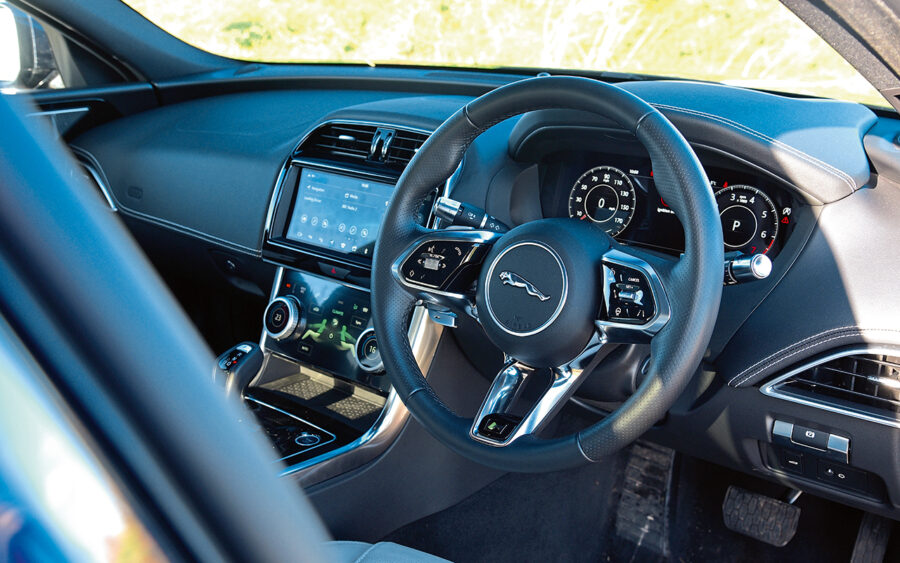
Of course, for cost-saving reasons, components are still shared among Jaguar’s cars, so the XE’s digital dash is seen throughout the range (including the new F-Type), while the digital ventilation controls (part of the car’s 2019 refresh) are straight out of the I-Pace. This visible tech earns the XE’s cabin a modern and contemporary appearance alongside the X-Type’s analogue clocks in a digital world. Illogically, that makes the older car easier to use, because in the X-Type I can turn up the heat without looking down, whereas in the XE I have to take my eyes away from the road for even the simplest of tasks.
However, the X-Type isn’t without its faults. For a supposedly luxury saloon, the materials are flimsier than a politician’s excuses and the car never felt as well-made as some of its rivals from the era. Which means that two decades on it’s hard to find an early X-Type whose interior isn’t badly marked or worn, or even missing trim. Facelifted models from 2007 improved slightly, but by then it was too late.
That lack of quality was also the main complaint aimed at the XE, until Jaguar improved the materials with the 2019 facelift. It now feels the best-made Jaguar after the I-Pace and I’m sure it will age better than its predecessor.
Much derision has always been made of the X-Type sitting on Ford’s CD132 chassis (as used by the second iteration of Mondeo); what’s often overlooked is that Jaguar’s engineers tweaked it considerably to make the car more Jaguar like.
Plus, the 2.5- and 3.0-litre V6s had all-wheel drive as standard, an option the Ford didn’t have. That was, ostensibly, a fix to get around the Mondeo not having rear-wheel drive, but it was also a handy marketing tool because while all-wheel drive had been pioneered in passenger cars by the Jensen FF in the Sixties, further established by the Audi Quattro 20 years later and popularized by the Subaru Impreza 10 years after that, it was still unusual for a luxury compact saloon.
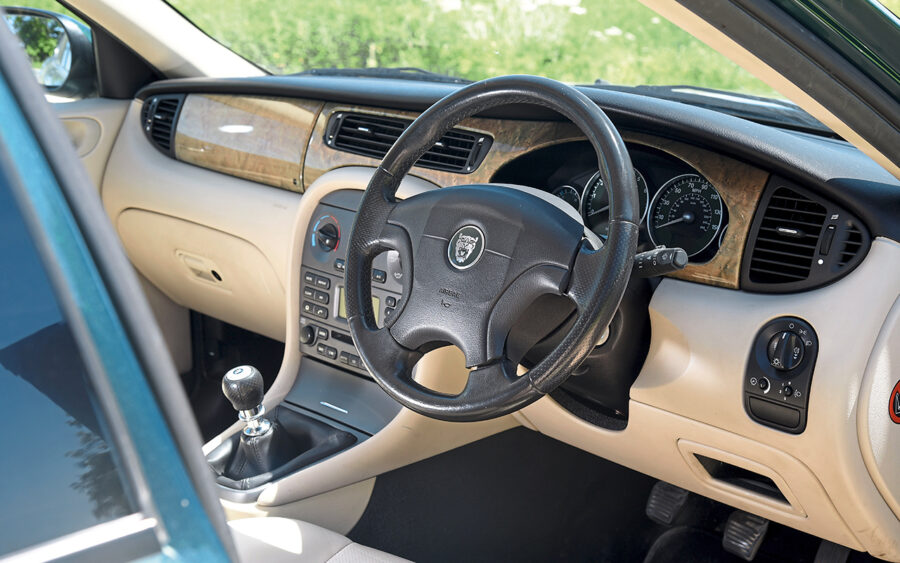
Drive is transferred through a transfer case to the rear axle, which ensures a rear-biased torque split. In development, this was initially set at 30:70 front to rear, but on the grounds of durability and handling, production vehicles were set at 40:60. The viscous coupling that regulates it is able to fully transfer torque to either axle to ensure the car always has grip.
The result is that this 18-year-old X-Type 2.5 V6 still feels tremendous fun to drive. Not only is the 190bhp engine always responsive and eager – aided by the surprising sharpness of the Ford-sourced five-speed manual ’box – but the grip is incredible for a saloon that was produced when Tony Blair was in office. The four Pirellis hold the asphalt surface with the same effectiveness as the rally-bred Impreza, which Jaguar’s engineers saw as the benchmark for road-holding.
Although it’s constructed from old-fashioned steel rather than the lightweight aluminium of the XE, the X-Type still feels lithe and agile through corners, aided by the stiff body, which is well damped to lessen body roll. The X-Type might not have the Jaguar’s trick electric system as fitted to all current models, but its ZF Servotronic 2 electronically controlled and speed-sensitive rack-and-pinion steering gear is perfectly weighted and accurate, allowing the car to scythe through corners with the same precision as the modern one.
The X-Type can bang and crash over potholes, though, a combination of the state of this 17-year-old car and the overly firm suspension set-up that was standard on the Sport trim.
Not long after I took over Jaguar World editorship in 2012, I received a call from a British engineer who wanted to know who he should contact in Jaguar’s management to buy the rights to the X-Type so that he could put the car back into production. A quick drive of this 2.5 Sport reveals why he thought there was still a market for the car. Will the same be said of the XE long after production finishes?
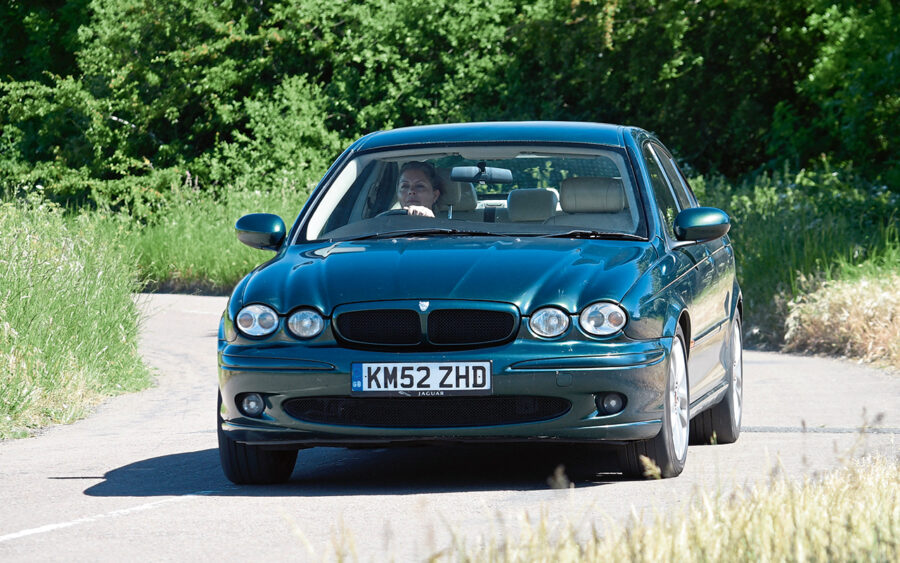
It has often been said that the reason why Jaguar didn’t directly replace the X-Type when it came to an end in 2009 was its lack of sales. Admittedly, the 355,227 produced were less than the management was hoping for (there was talk of 100k a year at the car’s launch), but such numbers still made the X-Type the best-selling Jaguar in the company’s history, proving the need for a small model.
No, the six-year gap between the X-Type and XE was due to a lack of a suitable platform. When Ford sold Jaguar in 2008 to the Indian industrial conglomerate, Tata, the Blue Oval’s large chassis range was no longer available and neither the British company nor its new owner had anything suitable in their joint armoury. It could have continued to use the CD132 chassis (in the same way the X250 XF used the same Ford DEW platform as the S-Type), but it was considered too old. Plus, Jaguar wanted to distance itself from the car’s humble origins. So, the position of small car within JLR’s arsenal became occupied by the 2011 Range Rover Evoque, a car that shared much of the X-Type’s mechanical parts.
Jaguar instead concentrated on reinventing itself by introducing new cars in its usual executive sectors, the X250 XF in 2008 and the X351 XJ two years later, while work began in the background on a new, modular architecture that could be adapted depending on the variety of car. Called PLA (for premium lightweight architecture) or more recently D7, it has enabled JLR to produce a variety of new models, the first being the Range Rover in 2013, followed by the Range Rover Sport the following year. The first Jaguar to use the chassis was a new compact saloon in 2015, the XE, followed by, among others, the F-Pace in 2016, Range Rover Velar in 2017 and the new Land Rover Defender this year.
Although the chassis is adapted to the type of car, its basic width remains the same, so the XE is large for a compact saloon. At 4,678mm and 1,850mm, it’s 6mm longer and 60mm wider than the X-Type, yet the XE offers less rear interior room and the boot is a third smaller. Go figure.
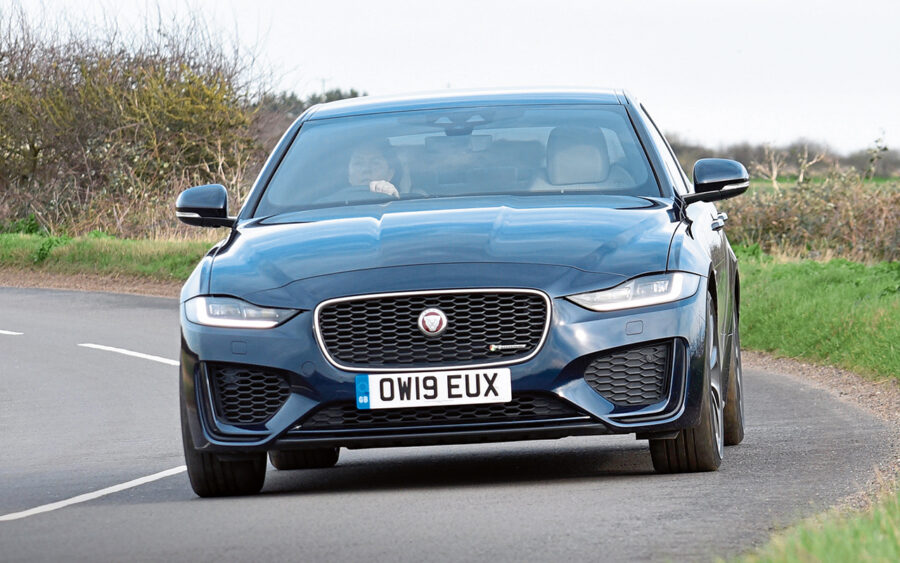
Plus, although it’s constructed from aluminium, at 1,611kg it’s also 56kg heavier than the X-Type 2.5. Couple that to the P250’s lack of AWD, and it doesn’t have the older car’s mountain goat-like abilities; it might be rear-wheel drive, but it doesn’t scamper around bends with the same enthusiasm as the X-Type. To transform the XE into more of a driver’s car, you need the 300PS (296bhp) version, which does have AWD, along with an extra 50PS.
The XE P250 does ride very well, however, coping with bumps better than its predecessor, yet even though the electric steering is perfectly balanced and accurate, the car just isn’t as engaging as the X-Type.
As mentioned, this particular XE has the 250PS (that’s 246bhp in old money) version of Jaguar’s 2.0-litre Ingenium turbo petrol engine. Strong, powerful and refined, it reaches 60mph in just 6.2 seconds, one-and-a-half under the X-Type 2.5’s time. Raspy exhaust note aside, it still lacks the charisma and gutsiness of the V6. It doesn’t help that there is no option for a manual gearbox – all XEs now use the eight-speed transmission that, to heighten the car’s ‘sporty’ personality, is operated by Jaguar’s shift lever, first used in the F-Type. The engine needs to be worked hard for the turbo to wake up, but even then the acceleration doesn’t feel as hard or as entertaining as the X-Type’s. It’s acceptable on a motorway, but it makes B-roads less satisfying.
Be that as it may, there is progress in ecological matters because the 2.0-litre 250PS engine is cleaner than the 2.5 V6. The XE returns 36.2mpg and emits 159g/km of CO2 compared to the 29mpg and 234g/km of the X-Type.
The other big difference between the two cars is price. The X-Type was always priced to sell – a 2.0-litre V6 model in 2002 started at less than £20,000. Admittedly that version has only 157bhp and is front-wheel drive, so isn’t as much fun as the 2.5 or 3.0 models, but it kept ‘Jenkins’ in the accountancy department happy. Even at £24k, a 2.5 Sport (such as the one featured here) was cheaper than the comparable BMW 3 Series and Mercedes-Benz C-Class. And while the XE SE R-Dynamic P250, at a smidge under £37k, is £4,000 more than the current versions of the aforementioned German models, it does have more power.
Obviously, the XE is technically a better car than the X-Type in every way: the build quality has been improved (I doubt it will suffer from the X-Type’s notorious Swiss cheese sills), it features more user-friendly tech and it is kinder on polar bears. But, it has also lost much of the Jaguar character, the undeniable spark that all previous models, from the 2.4 saloon to the X308 XJ8, have in spades. And that’s ironic considering the XE is based on a new JLR platform, while the X-Type used a Ford cast-off.
Now if Jaguar could make a saloon that’s as technically brilliant as the XE with a character as strong as the X-Type’s, that really would be progress.

